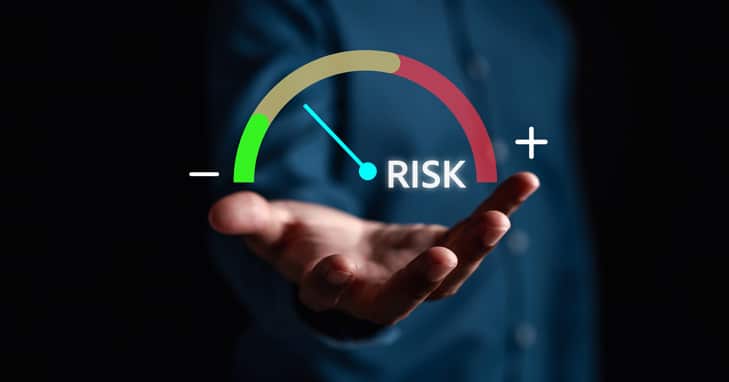Introduction: Why EHS Risk Assessment Isn’t Just Red Tape
Imagine a workplace where preventable accidents are rare, environmental spills are unthinkable, and regulatory fines are a distant memory. This isn’t a utopian dream; it’s the achievable reality for organizations that master EHS risk assessment. Far from being bureaucratic box-ticking, a robust EHS risk assessment process is the cornerstone of proactive risk management, safeguarding your most valuable assets: your people, the planet, and your profitability. In today’s complex operational landscape, effectively managing risks isn’t optional – it’s essential for sustainable success and regulatory compliance. This guide breaks down the process into 5 simple steps anyone can understand and implement, empowering you to build a safer, more resilient, and efficient organization.
What Exactly is EHS Risk Assessment?
EHS risk assessment is a systematic process designed to identify, analyze, evaluate, and prioritize potential hazards within the workplace environment that could harm people (Environment, Health, and Safety). It involves looking closely at what could go wrong, how likely it is to happen, and how severe the consequences could be. The core purpose is to provide the necessary information to make informed decisions about implementing control measures to mitigate risks effectively. Think of it as a diagnostic tool for your organization’s safety and environmental health. A thorough EHS risk assessment forms the bedrock of your entire risk management strategy.
The Critical Importance: Beyond Compliance Checklists
Why invest time and resources into EHS risk assessment? The benefits extend far beyond simply avoiding fines for non-compliance:
- Enhanced Worker Safety: Proactively identifying and addressing safety risks prevents accidents, injuries, and illnesses, fostering a culture of care and well-being. This directly impacts occupational safety.
- Environmental Protection: Identifying potential pollution sources, waste streams, or resource inefficiencies allows you to minimize environmental impact.
- Regulatory Compliance: Demonstrating a systematic approach to identifying and controlling risks is fundamental to meeting regulatory compliance obligations from agencies like OSHA, EPA, and local authorities.
- Operational Efficiency: Reducing accidents and unplanned downtime streamlines operations. Effective risk management processes prevent costly disruptions.
- Cost Reduction: Preventing incidents avoids direct costs (medical, compensation, cleanup) and indirect costs (lost productivity, reputational damage, increased insurance premiums).
- Improved Reputation: Strong EHS risk management enhances your brand image with employees, customers, investors, and the community.
- Informed Decision-Making: Provides data-driven insights for prioritizing safety investments and resource allocation within your risk management plan.
Key Components of an Effective EHS Risk Assessment Process
A truly effective EHS risk assessment isn’t a one-off event; it’s an ongoing cycle integrated into your risk management practices. Key components include:
- Management Commitment: Visible leadership support and resource allocation are non-negotiable.
- Competent Personnel: Assessments should be conducted by individuals with the necessary knowledge, training, and experience regarding hazards and work.
- Employee Involvement: Workers on the front lines often have the best insight into potential hazards. Their participation is crucial.
- Scope Definition: Clearly defining what areas, activities, or processes are being assessed.
- Systematic Methodology: Using consistent, recognized approaches to identify hazards, assess risks, and determine controls.
- Documentation: Maintaining clear records of the assessment process, findings, decisions, and actions taken (often within a risk register).
- Communication: Effectively sharing findings and control measures with all affected personnel.
- Review and Update: Regularly revisit assessments, especially after incidents, near misses, or significant changes.
The Power of 5: Unveiling the Simple Steps
The core framework for conducting an EHS risk assessment can be distilled into five fundamental, sequential steps. These steps form the backbone of most risk management processes globally, aligning with standards like ISO 31000 and OHSAS 18001/ISO 45001:
- Identify Potential Hazards
- Determine Who Might Be Harmed and How
- Evaluate the Risks and Decide on Precautions
- Record Your Findings and Implement Control Measures
- Review Your Assessment and Update If Necessary
Let’s delve into each step in detail.

Step 1: Identify Potential Hazards – Seeing the Invisible Threats
The foundation of any EHS risk assessment is thorough hazard identification. A hazard is anything with the potential to cause harm. This step involves actively looking for sources of EHS risk before they manifest into incidents.
How to Identify Hazards Effectively:
- Workplace Walkthroughs (Inspections): Physically observe the environment, equipment, substances, and work activities. Look for obvious issues and subtle clues. Engage workers during these walks.
- Consulting Workers: Employees have invaluable hands-on experience. Ask them about near misses, difficulties they face, and their safety concerns. This taps into practical risk management practices.
- Reviewing Documentation: Examine accident/incident reports, sick leave records, maintenance logs, chemical safety data sheets (SDS), manuals, and previous EHS risk assessment reports.
- Considering Non-Routine Operations: Don’t just focus on everyday tasks. Consider maintenance, cleaning, shutdowns, startups, and emergency situations.
- Looking at All Aspects: Consider physical, chemical, biological, ergonomic, psychosocial, and environmental hazards. Think about equipment, substances, work methods, the work environment itself, and organizational factors.
Common Hazard Categories:
- Physical: Slips, trips, falls; moving machinery parts; electricity; noise; vibration; extreme temperatures; radiation; fire; explosions.
- Chemical: Exposure to toxic, corrosive, flammable, or reactive substances (liquids, gases, dusts, vapors, fumes).
- Biological: Bacteria, viruses, fungi, parasites, bodily fluids, allergens (e.g., in healthcare, labs, waste handling).
- Ergonomic: Repetitive strain injuries, manual handling risks, poor workstation design, awkward postures.
- Psychosocial: Work-related stress, violence, bullying, fatigue.
- Environmental: Potential for spills to soil/water, air emissions, waste generation, resource consumption (energy, water).
Step 2: Determine Who Might Be Harmed and How – Understanding Vulnerability
Identifying the hazard is only half the battle. You must understand who could be harmed by it and in what way. This ensures your control measures are targeted and effective.
Considering Affected Groups:
- Employees: Different roles may have different exposures (e.g., operators, maintenance staff, cleaners, office workers). Consider new, young, or expectant mothers who may be particularly vulnerable.
- Contractors and Subcontractors: Visitors or temporary workers unfamiliar with the site.
- Visitors: Members of the public, clients, or suppliers on-site.
- Neighboring Communities or Environment: Potential for off-site impacts like air pollution, noise, or contaminated runoff.
Defining the Harm:
Be specific about the potential consequences. Could the hazard cause:
- Physical injury (cuts, fractures, burns)?
- Acute or chronic illness (respiratory disease, dermatitis, cancer)?
- Psychological harm (stress, anxiety)?
- Environmental damage (soil contamination, water pollution, harm to wildlife)?
Understanding the nature of the harm is crucial for accurately evaluating the risk level in the next step and developing appropriate risk mitigation strategies.
Step 3: Evaluate the Risks and Decide on Precautions – Assessing Severity and Likelihood
This step is the analytical heart of the EHS risk assessment. You evaluate the level of risk posed by each identified hazard. Risk is a combination of two factors:
- Likelihood (Probability): How likely is it that the harm will occur? (e.g., Very Likely, Likely, Unlikely, Very Unlikely)
- Severity (Consequence): How severe would the harm be if it did occur? (e.g., Major Injury/Illness/Impact, Moderate, Minor, Negligible)
Risk Evaluation Methods:
- Qualitative: Using descriptive scales (like High, Medium, Low) based on judgment and experience. Often involves risk matrices to visualize combinations of likelihood and severity.
- Quantitative: Assigning numerical values to likelihood and severity (e.g., probabilities, financial costs, days lost) to calculate a risk score. This is more complex but can be powerful, especially when supported by risk management software.
- Semi-Quantitative: A blend, using numerical scales within defined categories.
The Hierarchy of Controls: Selecting the Right Precautions
Once the risk level is understood, you decide on the necessary precautions. Always aim to mitigate risks as far as is “reasonably practicable.” The Hierarchy of Controls provides a prioritized framework for selecting the most effective control measures:
- Elimination: Completely remove the hazard (e.g., stop using the toxic chemical).
- Substitution: Replace the hazard with a less risky alternative (e.g., using a less hazardous solvent, water-based paints).
- Engineering Controls: Isolate people from the hazard physically (e.g., machine guards, ventilation systems, noise enclosures, spill containment berms).
- Administrative Controls: Change the way people work (e.g., safe work procedures, training, warning signs, job rotation, reduced exposure time).
- Personal Protective Equipment (PPE): Protect the worker with equipment (e.g., safety glasses, gloves, respirators, earplugs). PPE is the last line of defense and relies on human behavior.
The goal is always to implement controls as high up this hierarchy as possible. Administrative controls and PPE are less reliable than eliminating the hazard or using engineering solutions. Your choices here define your risk management strategy for each hazard.
Step 4: Record Your Findings and Implement Control Measures – Action and Accountability
Documentation is not just a formality; it’s a critical component of EHS risk management and regulatory compliance. It provides evidence of your due diligence and forms the basis for action and review.
What to Record:
- The hazards identified.
- Who might be harmed and how.
- Your evaluation of the risks (including the level before and after controls).
- The control measures you have implemented or plan to implement.
- Who is responsible for implementing each control and by when.
- When the assessment was done and by whom.
- The date for review.
This record is often maintained in a central risk register, a key tool within risk management software. A risk register provides a live overview of all identified EHS risks, their status, and assigned actions.
Implementation is Key:
Recording findings is pointless without action. Implementation involves:
- Assigning Clear Responsibilities: Who does what and by when?
- Allocating Resources: Providing the time, budget, and tools needed.
- Developing Action Plans: Breaking down control implementation into manageable tasks.
- Communication: Ensuring everyone affected understands the new controls and procedures.
- Training: Providing necessary instruction on new work methods, equipment, or PPE.
- Supervision: Ensuring controls are followed consistently.
This is where your risk management plan moves from theory to practice, actively managing risks on the ground.
Step 5: Review Your Assessment and Update If Necessary – The Living Document
Workplaces are dynamic. Change is constant – new equipment, processes, chemicals, personnel, regulations, or lessons learned from incidents. An EHS risk assessment is a “living document” and must be reviewed regularly to remain valid and effective.
When to Review:
- Scheduled Reviews: Set regular intervals (e.g., annually, biannually).
- After Significant Changes: Introduction of new machinery, processes, substances, or work locations; organizational restructuring.
- Following an Incident or Near Miss: Accidents, illnesses, or close calls often reveal previously unidentified hazards or control failures.
- When New Information Becomes Available: Such as new research on hazards, changes in legislation, or feedback from audits.
- If Monitoring Shows Controls are Ineffective: Exposure monitoring, health surveillance, or inspection findings might indicate problems.
The Review Process:
- Re-examine the existing assessment.
- Check if control measures are still in place and working effectively.
- Identify any new EHS risks.
- Update the documentation (risk register) and risk management plan accordingly.
- Communicate any changes.
This continuous improvement cycle is vital for mature EHS risk management and maintaining regulatory compliance.
Leveraging Technology: Tools for Smarter Risk Management
While the core steps can be done manually, technology significantly enhances the efficiency, accuracy, and power of EHS risk assessment and overall risk management processes. Risk management software platforms are transforming how organizations manage EHS risk:
Key Capabilities of EHS Risk Management Software:
- Centralized Risk Register: A single source of truth for all identified hazards, risks, controls, and actions.
- Standardized Assessment Templates: Ensuring consistency and compliance with standards.
- Automated Workflows: Streamlining the assessment process, review cycles, and action tracking.
- Real-Time Dashboards & Reporting: Providing instant visibility into risk profiles, control effectiveness, and compliance status.
- Incident Management Integration: Linking risk assessments directly to incident reports and investigations for better root cause analysis.
- Mobile Accessibility: Enabling hazard reporting and assessments directly from the shop floor or field.
- Document Management: Securely storing assessment records, procedures, and certificates.
- Compliance Tracking: Monitoring regulatory requirements and deadlines related to identified risks.
- Action Tracking: Assigning, tracking, and escalating corrective and preventive actions.
- Data Analytics: Identifying trends, hotspots, and opportunities for proactive risk mitigation.
Adopting risk management software moves organizations from reactive, paper-based systems to proactive, data-driven integrated risk management. It provides the backbone for efficient EHS risk management.
The Data Advantage: Driving Decisions with Insights
Modern EHS risk assessment is increasingly data-driven. Risk management software collects vast amounts of information from assessments, inspections, incident reports, audits, and monitoring.
How Data Enhances EHS Risk Assessment:
- Identifying Trends: Spotting recurring hazards or control failures across the organization.
- Prioritizing Resources: Using risk scores and trends to focus efforts and budgets on the most significant safety risks and environmental impacts.
- Measuring Effectiveness: Quantifying the impact of implemented control measures (e.g., reduction in incident rates, exposure levels).
- Predictive Analytics: Using historical data to forecast potential future incidents or high-risk areas, enabling proactive risk mitigation.
- Benchmarking: Comparing performance against internal targets or industry standards.
- Demonstrating ROI: Providing tangible evidence of the value of EHS risk management programs (e.g., reduced costs, improved productivity).
Moving from gut feeling to data-driven decisions within your risk management strategy significantly boosts the effectiveness and credibility of your EHS risk management efforts.

Best Practices for Implementing Successful EHS Risk Assessments
Implementing effective EHS risk assessments requires more than just following the steps. Embrace these best practices:
- Secure Leadership Commitment: Visible and active support from top management is essential for resource allocation and cultural adoption.
- Foster a Strong Safety Culture: Create an environment where safety is a core value, not just a priority, and employees feel empowered to report hazards without fear.
- Invest in Competence: Ensure assessors have the necessary training, skills, and knowledge. Provide ongoing development.
- Prioritize Employee Involvement: Actively engage workers at all stages – hazard identification, control selection, implementation, and review. They are the experts in their jobs.
- Integrate with Business Processes: Embed EHS risk assessment into daily operations, management of change (MOC), procurement, project planning, and new process design. This is integrated risk management at its best.
- Communicate Effectively: Clearly communicate assessment findings, actions, and responsibilities to all relevant parties. Use multiple channels.
- Leverage Technology: Utilize risk management software to streamline processes, ensure consistency, improve data analysis, and enhance reporting.
- Focus on Continuous Improvement: Regularly review the effectiveness of both your assessments and your overall risk management processes. Learn from incidents and near misses. Adapt and improve.
- Keep it Practical and Proportionate: The level of detail in an assessment should reflect the level of risk. Focus on significant risks first.
- Document Rigorously: Maintain clear, accessible, and up-to-date records as evidence of your proactive risk management practices.
The Tangible Benefits: Compliance, Efficiency, and Beyond
Investing in robust EHS risk assessment delivers measurable returns:
- Enhanced Regulatory Compliance: Systematic identification and control of risks provides demonstrable evidence of due diligence, reducing the likelihood of violations and penalties. It simplifies audits and reporting.
- Reduced Incident Rates: Proactive hazard identification and effective control measures directly prevent accidents, injuries, illnesses, and environmental incidents. This lowers associated costs (medical, compensation, cleanup, legal).
- Improved Operational Efficiency: Minimizing unplanned downtime caused by accidents, investigations, or regulatory shutdowns. Streamlining safety processes through risk management software saves time and resources.
- Boosted Employee Morale and Productivity: A demonstrably safe workplace increases employee trust, engagement, and focus. Reduced absenteeism due to injury or illness.
- Stronger Reputation: Enhances brand image as a responsible employer and environmentally conscious organization, attracting talent and customers.
- Better Resource Allocation: Data-driven insights allow for smarter investment in safety and environmental controls, focusing resources where they have the most significant impact on mitigating risks.
- Enhanced Resilience: Preparedness for potential EHS risks makes the organization more adaptable to change and unexpected events.
Conclusion: Empowering Your Organization Through Proactive Risk Management
EHS risk assessment is not a complex mystery reserved for specialists. By breaking it down into 5 simple steps – Identify Hazards, Determine Who/Harm, Evaluate Risks, Record/Implement, Review/Update – any organization can establish a powerful foundation for protecting people, the planet, and performance. Embracing systematic hazard identification, applying the hierarchy of controls, leveraging technology like risk management software, and fostering a culture of continuous improvement transforms EHS risk management from a compliance obligation into a strategic advantage. Remember, effective risk management processes are an investment, not a cost. They build safer workplaces, ensure regulatory compliance, enhance occupational safety, minimize environmental impact, and ultimately drive sustainable operational efficiency and success. Start implementing these five steps today and empower your organization to navigate risks with confidence.

